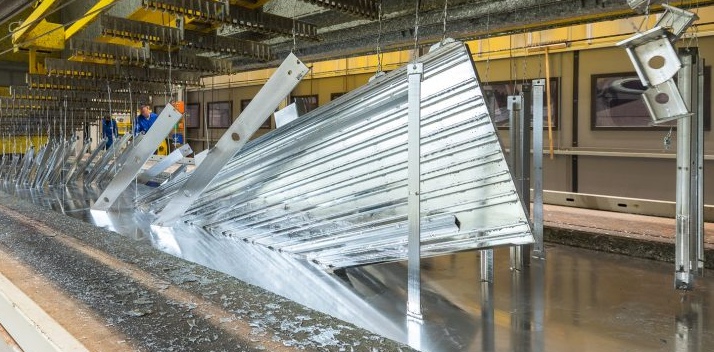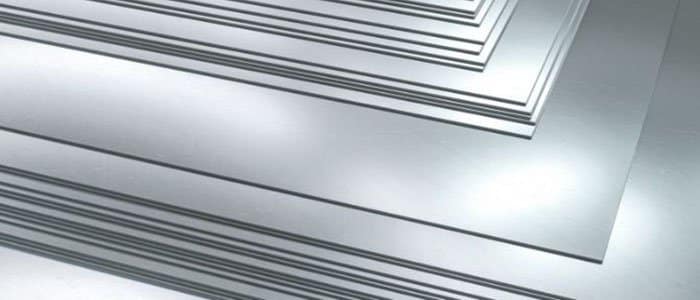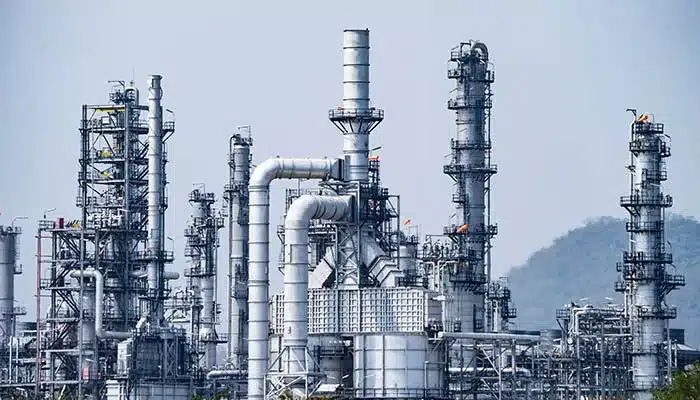Galvanized steel is a key material in modern construction and manufacturing. It provides great protection against rust and helps many structures and products last longer. At Daxun Alloy, we’ve seen firsthand how this versatile material revolutionizes various industries.This guide introduces the different types of galvanized steel and explains their many benefits and various uses to help you choose the right material.
What is Galvanized Steel?
Galvanized steel refers to steel that has been coated with a protective layer of zinc to prevent corrosion. This process is called galvanization. It creates a bond between zinc and steel. This bond provides a barrier. It protects the metal from environmental factors that can cause rust and damage. The zinc coating acts as a sacrificial anode, meaning it will corrode before the steel, offering long-lasting protection even if the coating becomes scratched or damaged.
The galvanization process was first developed in the 18th century and has since evolved into several distinct methods, each producing steel with specific properties suited for different applications. The science behind galvanization involves electrochemical principles that make zinc ideal for protecting steel, as zinc is more anodic than iron and will therefore corrode preferentially when exposed to corrosive elements.
Types of Galvanized Steel
Hot-Dip Galvanized Steel
Hot-dip galvanization is the most common and widely used method of producing galvanized steel. In this process, steel is immersed in a bath of molten zinc at temperatures typically around 860°F (460°C). The steel reacts with the zinc to form a series of zinc-iron alloy layers, topped with a layer of pure zinc.

The resulting coating consists of four distinct layers:
- Gamma layer (Gamma): The innermost layer, composed of 75% zinc and 25% iron
- Delta layer (Delta): A thin layer with approximately 90% zinc and 10% iron
- Zeta layer (Zeta): Composed of about 94% zinc and 6% iron
- Eta layer (Eta): The outermost layer, consisting of nearly 100% pure zinc
Hot-dip galvanized steel is characterized by its distinctive spangled appearance and robust coating that can be up to 10 times thicker than other galvanizing methods. This thickness provides excellent corrosion resistance, making it ideal for outdoor applications and harsh environments. The coating typically lasts 50-70 years in rural environments and 20-40 years in urban and coastal settings.
Electrogalvanized Steel
Electrogalvanizing, also known as electroplating, is a process that uses electrical current to deposit zinc onto the steel surface. Unlike hot-dip galvanizing, this cold process does not involve immersing the steel in molten zinc. Instead, the steel is placed in an electrolyte solution containing zinc ions, and an electric current is applied, causing the zinc ions to bond to the steel surface.
The resulting coating is much thinner than hot-dip galvanized steel, typically ranging from 0.2 to 2 mils (5 to 50 micrometers). However, the coating is extremely uniform and precise, making electrogalvanized steel ideal for applications requiring a smooth, consistent finish and tight dimensional tolerances.
Electrogalvanized steel is commonly used in automotive parts, appliances, and electronic enclosures where appearance and precise dimensions are critical. While it offers less corrosion resistance than hot-dip galvanized steel, it provides adequate protection for indoor applications and mild environments.
Galvannealed Steel
Galvannealing is a hybrid process that combines hot-dip galvanizing with annealing. After the steel is coated with zinc using the hot-dip process, it is heated right away. The temperature is between 950-1050°F (510-565°C). This heat makes the zinc mix into the steel surface. It forms a zinc-iron alloy coating.
The resulting coating is composed of approximately 90% zinc and 10% iron, creating a matte gray finish that is more weldable and paintable than traditional hot-dip galvanized steel. The galvannealed coating is also harder and more resistant to flaking and peeling during forming operations.
Galvannealed steel is particularly popular in the automotive industry for body panels and structural components, as well as in appliance manufacturing and construction applications where welding or painting is required. The improved paint adhesion and weldability make it a versatile choice for complex fabrication processes.
Cold Galvanized Steel
Cold galvanizing, also known as cold galvanizing or zinc-rich painting, is not a true galvanizing process but rather a coating method that applies zinc-rich paint to steel surfaces. This paint contains a high percentage of zinc dust (typically 77-92%) in an organic or inorganic binder.
When applied to steel, the zinc particles in the paint provide cathodic protection similar to hot-dip galvanizing, though to a lesser extent. Cold galvanizing is primarily used for touch-up and repair of existing galvanized coatings, as well as for protecting structures that cannot be hot-dip galvanized due to size or location constraints.
While cold galvanized steel offers less corrosion protection than hot-dip or electrogalvanized steel, it provides a convenient and cost-effective solution for field repairs and maintenance applications. It’s commonly used for repairing damaged galvanized coatings on transmission towers, bridges, and other large structures.
Mechanically Deposited Zinc
Mechanically deposited zinc, also known as mechanical plating or peen plating, is a process that uses mechanical energy to deposit zinc powder onto steel surfaces. In this process, steel parts are placed in a rotating barrel with zinc powder, glass beads, and promoting chemicals. The tumbling action causes the glass beads to peen the zinc powder onto the steel surface, creating a uniform coating.
This method produces a coating that is denser and more uniform than cold galvanizing but thinner than hot-dip galvanizing. Mechanically deposited zinc coatings typically range from 0.5 to 4 mils (12 to 100 micrometers) in thickness.
Mechanically deposited zinc is particularly suitable for small parts, fasteners, and components that would be distorted by the high temperatures of hot-dip galvanizing. It provides good corrosion resistance and is commonly used for screws, bolts, nuts, and other hardware items.
Advantages of Galvanized Steel
Superior Corrosion Resistance
The primary benefit of galvanized steel is its exceptional resistance to corrosion. The zinc coating acts as a sacrificial barrier, protecting the underlying steel even when scratched or damaged. This self-healing property ensures long-term protection with minimal maintenance.
Cost-Effectiveness
While the initial cost of galvanized steel may be higher than uncoated alternatives, its extended lifespan and reduced maintenance requirements result in significant long-term savings. Structures made from galvanized steel can last decades longer than those using unprotected steel.
Versatility
Galvanized steel can be formed, welded, and fabricated using standard techniques, making it suitable for a wide range of applications. Its adaptability allows architects and engineers to incorporate it into diverse projects without compromising on design flexibility.
Environmental Sustainability
Galvanized steel is 100% recyclable without loss of physical or chemical properties. The long service life of galvanized products also means fewer resources are consumed for replacements, reducing the overall environmental impact.
Applications of Galvanized Steel
Construction Industry
In construction, galvanized steel is used for structural framing, roofing, gutters, downspouts, and fencing. Its durability makes it ideal for both residential and commercial buildings exposed to weather elements.
Automotive Industry
The automotive sector utilizes galvanized steel for body panels, chassis components, and underbody parts. The material’s corrosion resistance ensures vehicle longevity and safety.
Agriculture
Agricultural equipment and structures benefit greatly from galvanized steel’s resistance to harsh chemicals and environmental conditions. Silos, fencing, and irrigation systems commonly use galvanized components.
Utilities and Infrastructure
Power transmission towers, utility poles, and highway guardrails are frequently constructed from galvanized steel due to their strength and resistance to atmospheric corrosion.
Conclusion
Galvanized steel’s exceptional durability, cost-effectiveness, and versatility make it an essential material in today’s industrial landscape. Its ability to withstand harsh environments while requiring minimal maintenance makes it an ideal choice for countless applications across industries. As technology advances, galvanization processes continue to improve, offering even better performance and environmental benefits.
Whether you’re constructing a building, manufacturing automotive parts, or designing consumer products, galvanized steel provides a reliable solution that stands the test of time. By understanding the different types available and their specific advantages, you can make informed decisions that ensure the success and longevity of your projects.




